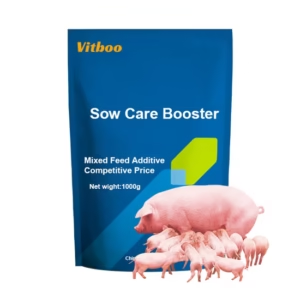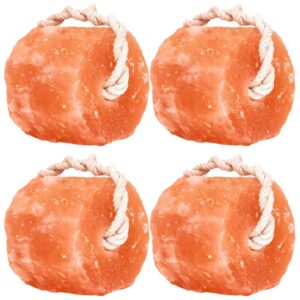Description
Guinea grass for sale is a palatable and productive forage for cattle. Learn its benefits, cultivation, efficient optimization for healthy cattle feeding.
Guinea grass for sale
Guinea Grass: A Nutritional Powerhouse for Cattle Feeding
For cattle farmers seeking a cost-effective and nutritious forage option, Guinea grass ( Megathyrsus maximus) is a strong contender. This palatable and productive perennial grass is a staple in many tropical and subtropical regions, known for its resilience, adaptability, and positive impact on cattle weight gain and overall health. Understanding the benefits and proper management of Guinea grass can significantly improve your cattle feeding strategy.
Why Choose Guinea Grass for Your Cattle?
Guinea grass offers a multitude of advantages for cattle feeding:
- High Yield Potential: Guinea grass boasts impressive yields, producing significant amounts of biomass per hectare compared to other forage options. This ensures a consistent and reliable feed source, particularly crucial during dry seasons.
- Nutritional Value: Well-managed Guinea grass provides a good source of protein, carbohydrates, and fiber, all essential for cattle growth, milk production, and overall health. The protein content, though variable depending on factors like stage of maturity and fertilization, can be sufficient to support moderate levels of production.
- Palatability and Digestibility: Cattle readily consume Guinea grass, making it a highly palatable feed option. Its relatively high digestibility allows animals to efficiently extract nutrients, contributing to improved weight gain and milk yield.
- Adaptability and Resilience: Guinea grass thrives in a variety of soil types and is relatively drought-tolerant, making it a robust choice for farms with diverse environmental conditions. It also exhibits good regrowth after grazing or cutting.
- Cost-Effectiveness: As a perennial grass, Guinea grass reduces the need for frequent replanting, saving on labor and seed costs. Its high yield potential further minimizes the need for supplemental feed, leading to significant cost savings in the long run.
Optimizing Guinea Grass Production for Cattle Feeding:
To maximize the benefits of Guinea grass for cattle feeding, consider these management practices:
- Soil Preparation and Planting: Proper soil preparation, including tilling and fertilization, is crucial for establishing a healthy Guinea grass stand. Choose a suitable variety for your region and climate. Planting can be done through seeds or cuttings, with cuttings generally leading to faster establishment.
- Fertilization: Regular fertilization, especially with nitrogen, is essential to maintain high yields and improve protein content. Soil testing can help determine the specific nutrient needs of your Guinea grass.
- Weed Control: Effective weed control is vital, particularly during the establishment phase, as weeds can compete with Guinea grass for resources. Implement appropriate weeding strategies, including manual weeding, herbicides, or integrated weed management practices.
- Grazing Management: Implement a rotational grazing system to prevent overgrazing and allow for proper regrowth. This helps maintain the health and productivity of the Guinea grass stand. Allow the grass to reach a height of around 30-40 cm before grazing and remove cattle when it is grazed down to about 10-15 cm.
- Harvesting for Hay or Silage: When grazing is not feasible, Guinea grass can be harvested and conserved as hay or silage. Hay is made by drying the grass, while silage involves fermenting the grass to preserve it. Proper harvesting and storage techniques are crucial to maintaining the nutritional value of the conserved forage.
- Cutting Frequency: Avoid cutting too frequently, as this can weaken the plant and reduce yields. Optimal cutting frequency depends on factors like rainfall, temperature, and fertilization levels. Generally, a cutting interval of 4-6 weeks is recommended.
- Intercropping: Consider intercropping Guinea grass with legumes like Desmodium or Stylosanthes. Legumes fix nitrogen in the soil, enriching the soil and improving the overall nutritional value of the forage.
Considerations and Potential Challenges:
While Guinea grass offers numerous advantages, it’s important to be aware of potential challenges:
- Cyanide Poisoning: Under certain conditions, particularly during periods of rapid growth after drought, Guinea grass can accumulate cyanide. To mitigate this risk, avoid grazing cattle on young, rapidly growing Guinea grass immediately after a drought-breaking rain.
- Seed Dispersal: Guinea grass can be invasive in some areas. Careful management is necessary to prevent it from spreading to unwanted locations.
- Quality Decline with Maturity: As Guinea grass matures, its fiber content increases, and its digestibility and protein content decrease. Proper grazing or cutting management can help maintain the quality of the forage.
Conclusion:
Guinea grass is a valuable and versatile forage option for cattle feeding. By understanding its benefits, implementing proper management practices, and addressing potential challenges, cattle farmers can harness the potential of Guinea grass to improve animal productivity, reduce feed costs, and contribute to sustainable livestock production. Consider consulting with agricultural experts and conducting local trials to determine the best practices for managing Guinea grass in your specific farming context.














Reviews
There are no reviews yet.